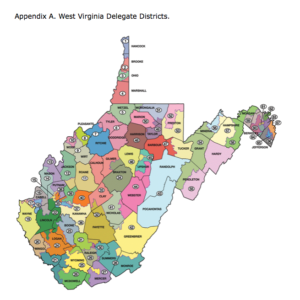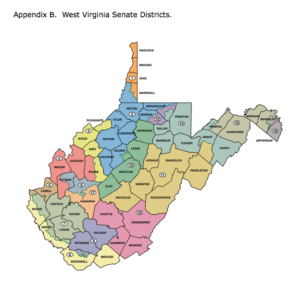Blaming The Victim: West Virginia’s Flirtation With Medicaid Work Requirements
It was my intention when launching this blog to support economic policies in West Virginia that actually spread prosperity to all citizens. The wealthy don’t seem to need help ensuring they get a big plate full at the prosperity table. It is the less fortunate who need help. But in this long Republican winter, avoiding policies that hurt the less fortunate is really a full time job.
Two ideas popular in West Virginia and the nation today fuel this problem. First is the Koch-funded libertarian idea that any expansion of public benefits is a threat to the “liberty” of those who are taxed to pay for it. This is well-documented in Nancy MacLean’s 2017 book Democracy in Chains. Second is the populist notion that people who receive public benefits are somehow lazy and morally at fault for their situation. Both of these factors are on display in the current debate about whether to add work requirements for Medicaid benefits.
Medicaid is a jointly funded federal and state program that helps several categories of low income and disabled people with medical costs. As of 2017, Medicaid provided healthcare coverage to 74 million nationwide (over 23% of the population). Some of the covered categories include children in low-income families, pregnant women, parents of Medicaid-eligible children who meet certain income requirements, and low-income seniors.
Obamacare extended Medicaid eligibility to all U.S. citizens and legal residents with income up to 138% of the federal poverty line, including for the first time adults without dependent children. But as a result of a Supreme Court ruling, states were not required to adopt this expansion in order to receive federal Medicaid funding for previously covered groups. Given its large poor population, West Virginia wisely opted to extend coverage. About 170,000 additional West Virginians became eligible under Medicaid expansion, roughly 9% of the state’s population.
On January 11, 2018, the landscape changed. The Director of the federal Centers for Medicare and Medicaid Services (CMS) issued a letter to all state Medicaid directors inviting them to apply for a waiver that would allow states to require participation in work and other community engagement as a condition for Medicaid eligibility. The policy change is described as “designed to assist states in their efforts to improve Medicaid enrollee health and well-being through incentivizing work and community engagement.” Yes, you read that right. These bureaucrats are asserting that work will make you healthy. They cite studies that link unemployment with depression. Of course, they have it totally backwards – being healthy will enable you to work.
I am inclined to think that CMS’ explanation is a cynical effort to avoid the legal challenges to Medicaid work requirements that have already begun. In the first place, approving work requirement waivers is an about-face – several states attempted this in the past but were denied. They were denied because work requirements for eligibility are contrary to Medicaid’s stated purpose to provide comprehensive healthcare coverage for people below state income thresholds. Administrative agencies cannot lawfully rewrite a statute through adding eligibility requirements that advance other goals (limiting benefits to the “deserving poor”) that are contrary to the purpose of the law. CMS operatives know this, which explains their absurd effort to link work requirements with health.
At the urging of Republican legislators, West Virginia’s Department of Health and Human Resources is now considering work requirements for Medicaid recipients. According to Jeremiah Samples, Deputy Secretary of DHHR, this effort would focus on “able-bodied” people:
We’re trying to empower folks to get out of the system. At the end of the day, the best thing we can do at DHHR for our able-bodied population is to get them into the workforce, without question.
Truth be told, any such requirements would expel recipients from the system, not “empower” them to leave. This is a stick not a carrot. For Medicaid expansion states like West Virginia, any work requirements will have the (intended) effect of reducing the recipient population irrespective of whether those removed remain below the state income threshold.
How would this happen? According to Mr. Samples, the DHHR is reviewing how other states plan to add work requirements. Kentucky’s waiver was the first to be approved by CMS. The Kentucky plan calls for reporting by the recipient every 30 days to verify that he or she is working or involved in some other activity approved by the authorities. Kentucky will disenroll recipients from Medicaid for up to six months if they fail to report changes in income or work status. Beyond the sheer hassle to the recipient and the possibility of inadvertent noncompliance, this would be yet another layer of red tape and opportunity for error. It would be a system the sole purpose for which is to snag and remove Medicaid recipients who do not repeatedly, month after month, prove their eligibility and worthiness. An aide to Kentucky Governor Blevins says that he expects 95,000 recipients to be removed from Medicaid benefits within five years.
Getting people off benefit rolls and onto employment rolls is a great idea. But West Virginia can’t do this by denying people healthcare. There are several reasons why an “able-bodied” person might be in need of Medicaid that have nothing to do with laziness. A shortage of jobs is one. Being between jobs for over 30 days is another. A mismatch between job requirements and a worker’s skill might be another. Opioid dependency might be involved. In an excellent editorial published on January 25, 2018, The Charleston Gazette put it this way:
How does interruption in coverage improve anything? Or is it just an exercise for the righteous . . . to feel better about themselves? ‘Must work for your healthcare,’ might be a great policy in the perfect imaginary world where ideologists live, but it fails to acknowledge the real circumstances of life in most of West Virginia, both town and country. No doubt that is by design. If people who never liked the Medicaid expansion can dress up their ‘solutions’ as getting tough on the poor and lazy, it sells better than if it is more accurately described as kicking the most vulnerable West Virginia workers, or potential workers.
Eighteen states declined to accept Medicaid expansion funds despite the needs of their populations. This group includes every state in the old Confederacy except Arkansas and Louisiana. But one unintended consequence of the present willingness of CMS to approve Medicaid work requirements is that several of these non-expansion states are now considering participation in the expansion. This may have the ultimate effect of increasing the Medicaid rolls nationwide. But it is a development that will not help expansion states like West Virginia.


